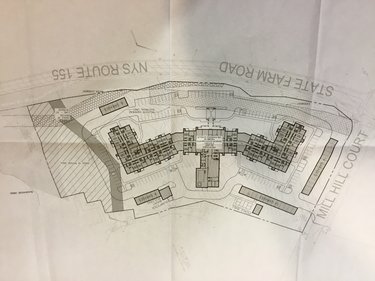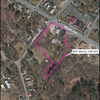Mill Hill development wants to nix nursing home
GUILDERLAND — Mill Hill LLC wants to amend a Planned Unit Development district for the Mill Hill Retirement Community that was approved in 1993 and build a 92-unit, three-story senior independent-living apartment complex instead of the 160-bed nursing home that was the only portion of the original plan not yet constructed, the town board heard last Tuesday.
The PUD at Route 155 and Mill Hill Court has been amended twice before, presenter Mary Beth Slevin of Stockli Slevin & Peters in Guilderland told the board: in 2006 to permit a Stewart’s shop, and in 2010 to revise the type of living from the contemplated apartments to townhouses.
The facility would be for active seniors who are independently mobile. Some transportation would be provided, as would educational and social programs and a continental breakfast in the facility’s great room, but no assisted-living or other services would be available. Each apartment would have its own kitchen.
The development now includes Atria, an assisted-living facility; 74 townhouses; and the Stewart’s, Slevin said.
The plan was to build a nursing-home facility, but Slevin told the board, “We believe that this proposal is entirely consistent with the vision for the PUD as adopted in 1993 and even as amended over time, and it would provide a very useful and very important alternative for seniors, not currently available in the town of Guilderland.”
Egress would be from Mill Hill Court — which is a private road — and not from Route 155. The plan calls for 145 parking stalls, with 40 of those being in garages, and 105 being spaces in a lot. There would also be a swimming pool, a pavilion, and a pickleball court.
The building’s footprint would be about 43,500 square feet, the board heard, with a total of about 120,000 square feet across all three stories.
Six residents of the townhouses expressed concerns at the public hearing, mainly about traffic in and out of the development; stormwater issues as a result of increased pavement and building in areas that are now green; and the size of the building and whether it would fit in with its surroundings.
The question of who would be responsible for maintaining the road around the facility was also raised, and Slevin said she would look into that.
Rosario Testa, who owns 58 Fathers Way with Donna Testa, said that the residents of the townhouses pay a homeowners’ association fee, which covers road maintenance.
Donna Testa told the board that the townhouse residents had recently paid to have the private roads in the development resurfaced, and that she did not want to see them “ripped up” by heavy construction vehicles.
Regarding stormwater, Andrew DeSantis of the engineering firm VHB said, “By law, we cannot allow any more stormwater off of this parcel than currently comes off of it.” He continued, “So I understand, going from forest and brookland to pavement and building, there will be an increase in runoff. But we have a number of items we can use to retain the stormwater on this site, and only discharge it as it discharges currently from the property.”
He said that the engineers would look into what would work best on the site, whether a combination of “underground facilities, perhaps some rain gardens, some swales.”
Many of those concerns, said Supervisor Peter Barber, would be addressed in detail with the planning board, if the town board should decide to recommend approval.
Barber asked the applicant to provide a map that shows how this project will relate to the other parts of the Mill Hill development — for instance, how far are the garages from the townhouses, and how far away is the Atria complex? He asked the applicant to include the topography on the map, to show, for instance, whether a “three-story building is really three stories, or is it more like two-and-a-half, because it’s lower.”
The board was told that a traffic study would be done.
Barber told The Enterprise later that the town board, before making a decision, would need more information on trips generated at peak and non-peak hours from similar properties, as well as information on how much traffic the light at that intersection can handle.
Slevin said at the meeting that this use is less intensive than the use originally planned.
But some residents disagreed, saying that independent and active seniors — and the family, friends, and various service providers who come to visit them — would generate more traffic than would a nursing home where very few of the residents would drive. Slevin said that there would be only four or five staff members — many fewer than at a nursing home — and that most residents would take advantage of the transportation provided for them rather than use their own vehicles.
Slevin said that an affiliated company of the applicant already owns two similar projects, in Wilton and Glenville, and that, there, “Most of the vehicles that people bring to the site sit on the site.”
She recommended that people go to visit those sites, to see how well the buildings fit into the landscape.
The apartment complex would have an age requirement of 55, Slevin said, adding that the average age of residents in the two other projects is mid-70s.



